Do you have what you need to make your garden grow?


Garden Center
Store Hours
Mon-Sat:
6:00am - 9:00pm
Sun:
7:00am - 8:00pm
Curbside:
09:00am - 6:00pm
Location
Popular at Your Garden Center
Summer Garden Center Supplies
Popular Garden Center Live Plants
Garden Project Calculators
;Resize=(703,395.44))
Grass Seed Calculator
When you're ready to seed your lawn, our calculator helps you estimate the amount of grass seed you'll need to get the job done.
;Resize=(703,395.44))
Mulch Calculator
Enter your preferred material, the square footage and mulch depth of the coverage space for accurate results.
;Resize=(703,395.44))
Fencing Calculator
We'll calculate the amount of fencing you should purchase based on your property needs.
Shop Outdoor and Garden Brands
Frequently Asked Questions About Your Store
What are good ways to get rid of weeds?
Weeds are likely poking through in the garden beds, even if you put down a landscape liner fabric or mulch to keep them at bay. Be sure to get them before the weeds' flowers dry out and drop their seeds. Pull weeds from the root in edible flower or vegetable gardens, and dig up the roots if the weed snapped off at ground level. If you choose to treat weeds with weed killer, find one that's safe for pollinators and pets — and wear heavy rubber gloves and a respirator to ensure that it doesn't touch your skin or lungs.
How do I fix burned grass?
The solution for how to get burnt grass green again is easy: Fix the scorched spot with a lengthy drink. You'll need to rehydrate those roots. It should perk up within the next week. On the other hand, the game plan for treating grass damaged by dog urine isn't as straightforward. Grass damaged by pets must be removed, neutralized, and replaced in fresh soil with new sod, grass seed, or patch and repair grass seed.
Is there an ideal time to water my garden?
If you can water during the early morning or in the evening, that's ideal. Watering when it's hottest outside means much of the moisture will evaporate. This applies to whatever you're growing: plants, veggies, trees, and grass. Whenever you water, give all the plants a thorough drink, and don't skip it if it's not the best time. The plants still need hydration, regardless of the time on the clock. Depending on your climate, grass type, and lawn health, you may also want to add a lawn fertilizer.
How do I fertilize my plants?
Once you've got your plants in the ground, make sure they stay hydrated and well-fed. Choose a synthetic or an organic fertilizer that fits your needs and gives your garden a boost. You can even find one that's formulated for your plants, whether you need a flower fertilizer, vegetable fertilizer, citrus tree fertilizer, or general garden fertilizer blend. Only apply as often as recommended on the packaging. Remember to always water immediately after, as directed, so your plants don't get fertilizer burn.
How can I keep cool this summer?
When you need a break from relentless summer heat, shelter under a covered gazebo or patio umbrella. If you have sturdy structures like a house or a shed, make your own shade by attaching shade sails and awnings. However, sometimes shade isn't enough because it's just too humid out. That's when a misting fan or patio mister can help cool the air and turn an uncomfortable afternoon into a refreshingly relaxing day. Return to lounging in the sun when that water-cooled air is ready.
How do I do a quick patio makeover for entertaining?
Spending time with friends in gorgeous summertime weather makes the season even more special. But you don't need to do a full patio makeover or create your own patio furniture collection from scratch to do it. Even a tiny backyard refresh can make a big difference. A new outdoor rug, outdoor lounge furniture, or even a string of outdoor lights can add character to a backyard space.
Garden Project Ideas

Protect wood from carpenter bees with our guide on sealing surfaces, using traps, and applying safe pest control methods.

Check out our tips on banishing gnats indoors and out using traps, sprays, and moisture control to keep your home pest-free.

Safely remove poison ivy with our guide on protective gear, cutting techniques, and herbicide use for effective eradication.

Maintain a healthy lawn using organic methods like manual weeding, natural herbicides, and proper lawn care practices.

Grow apples successfully with our guide on choosing varieties, planting, pruning, and pest control for a bountiful harvest.

Cultivate thriving grapes with our step-by-step tips on site selection, trellising, pruning, and disease prevention.
The Home Depot Garden Center at Santa Fe, NM
Shop the Garden Center Independence Day Sale
Welcome the Fourth with a yard that's dressed to impress. Our huge 4th of July Sale can help you do it. We carry outdoor power equipment, including string trimmers, lawn mowers, and hedge trimmers, to get your grass and trees in shape. Fresh fertilizer and another round of mulch might be just what the doctor ordered to perk up your garden. Continue watering your plants regularly to enjoy a stunning summer garden.
Settle Into Summer
As we stretch into the dog days of summer, your garden and landscaping will weather more sun than earlier in the season. That means you'll need to consider how to keep things cool with proper tending, shade, and irrigation. You might also need ways to beat the heat. Let us help. At The Home Depot Santa Fe, NM Garden Center, we've got what you need to make the most of summer.
Lawn Repair and Patching
Scorched, or burnt, grass has an oddly shaped discoloration that looks yellow. It happens when a reflective surface shines continuously on your lawn, or plastic or metal sits on the grass and bakes in the sunlight. You'll discover it once you move something that's been sitting out in the yard, like a sprinkler. Car mirrors or windows can also scorch grass when the sun angle is just right.
Water scorched grass well and wait a week or so. You should see the signs of life returning by then. If it's damaged beyond repair by extreme wear or pet behavior, you'll have to replace the grass or use patch and repair seed to fix it up.
Whether you’re doing upkeep on your current lawn or patching the bare spots, keep in mind which type of grass it is and tailor your lawn care accordingly. Match the grass type to how much sun your lawn gets — or to the existing grass type if you're doing patch repair. For example, if your lawn gets full sun, make sure you plant grass that thrives in the sunlight instead of a type that prefers shade or dappled sun.
Watch Your Garden Thrive
Much of your garden's upkeep comes down to balancing sun and water. You'll need both to keep plants growing and flowering. A general rule when watering plants and flowers is to water the roots. A garden hose, sprinkler or sprinkler system, or drip irrigation system will do the job. Contrary to popular belief, the blooms themselves don't need to be watered or even misted. Many flowers droop and wilt when they get wet, but they'll recover just fine once they dry off. Succulents are the exception to basic watering rules, so look up your specific succulent varieties to optimize their care.
In addition to watering, keep an eye on your plants' nutrient intake. Use fertilizer as recommended. We've even got fertilizers to match the types of plants you're growing so they'll enjoy a balanced diet with the right nutrients.
Grow Your Own Herbs
For fresh flavors to accent your homegrown produce, try herb gardening. They're generally low-maintenance. It's easy to learn how to grow herbs indoors, but you can raise herbs outdoors, too. If you grow herbs outdoors, stick to heat-loving herbs that'll endure the summer temperatures, and consider a hanging herb garden.
Planting herbs in the ground can be tricky, as many of them — especially mint — are invasive and will take over your lawn. To avoid a yard full of volunteer herb sprouts, keep them in decorative pots on a porch, window sill, or even in wall planters. Herbs also work well in a hydroponic garden, which doesn't use soil. Instead, they grow in a mixture of sand, rock chips, or perlite.
Vines as Decorative Shade
Plant vines near a trellis or an arched arbor so they'll climb it and give you both beauty and shade. Go with vine plants that are native to your area. They're a good choice for success and attract pollinators. Jasmine, wisteria, and ivy are common options for creating a stunning archway or pathway. Remember to match your vine plants to the amount of sunlight you receive, as some like full sun and others don't. As a bonus, many vines put out sweet-smelling flowers with a delightful fragrance you can enjoy as you cool off in the shade.
Find Your Summertime Supplies Today
No matter if your perfect summer includes grilling, relaxing, or completing those outdoor DIY projects, we've got what you need to keep your days flowing with ease. Make the most of these long evenings and early mornings to enjoy all the season has to offer. Shop online, on our app anywhere you like, or in the aisles of your Santa Fe, NM Garden Center.
Nearby Stores
Find Another Store
7700 Us 550 Ne
Rio Rancho, NM 87124
39.17 mi
Mon-Sat: 6:00am - 9:00pm
Sun: 7:00am - 8:00pm
10200 Coors Dr Nw
Albuquerque, NM 87114
48.19 mi
Mon-Sat: 6:00am - 9:00pm
Sun: 7:00am - 8:00pm
1220 N Renaissance Blvd Ne
Albuquerque, NM 87107
49.70 mi
Mon-Sat: 6:00am - 9:00pm
Sun: 7:00am - 8:00pm
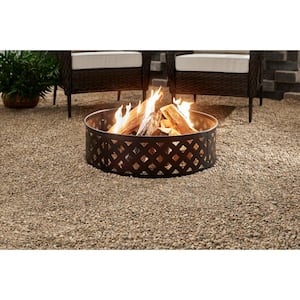
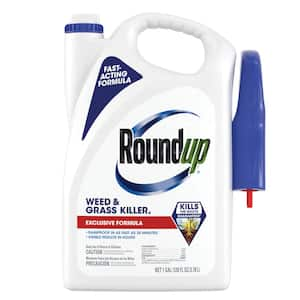
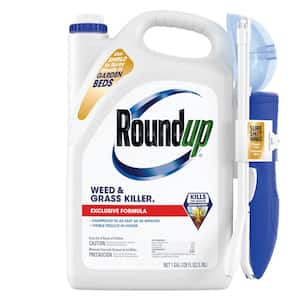
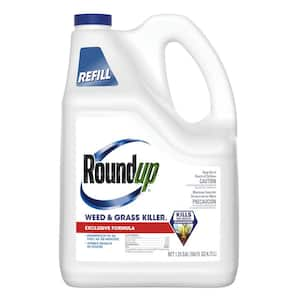
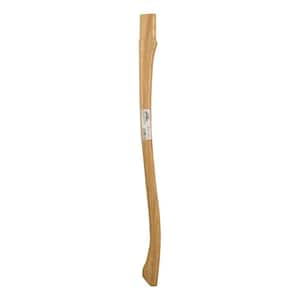
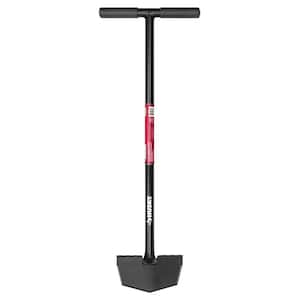
)
)
;Resize=(300,300))
/17_514245_S_012_Product%20Image%20(square).jpg?im=Resize=(300,300))
)
/2023_P2_Rain_Barrels_Product%20Image%20(square).jpg?im=Resize=(300,300))
;Resize=(300,300))
;Resize=(300,300))
)
)
;Resize=(300,300))
)
)
)
)
;Resize=(300,300))
;Resize=(300,300))
)
)
)
;Resize=(300,300))
;Resize=(300,300))
)
;Resize=(300,300))
;Resize=(300,300))
)
/12_SOIL_B_0420_Social%20media%20(square).jpg?im=Resize=(300,300))
;Resize=(300,300))
;Resize=(300,300))
;Resize=(300,300))
)
;Resize=(300,300))
)
;Resize=(300,300))
;Resize=(300,300))
/18Patio_Camden_Seagrass_5pcSeating_Planters_302468736_DTL3_L_Social%20media%20(square).jpg?im=Resize=(300,300))
;Resize=(300,300))
)
;Resize=(300,300))
;Resize=(300,300))
)
)
.jpeg?im=Crop,rect=(363.69230769230774,1.2307692307692308,958.7692307692308,958.7692307692308);Resize=(300,300))
;Resize=(300,300))
)
)
)
;Resize=(300,300))
;Resize=(300,300))
)
;Resize=(300,300))
)
)
;Resize=(300,300))
)
;Resize=(300,300))
)
;Resize=(300,300))
;Resize=(300,300))
)
)
)
;Resize=(300,300))
;Resize=(300,300))
/Dorado_Tropical_Combo_14in_Product%20Image%20(square).jpg?im=Resize=(300,300))
;Resize=(300,300))
/2023_2_Cactus_Plants_Product%20Image%20(square).jpg?im=Resize=(300,300))






































